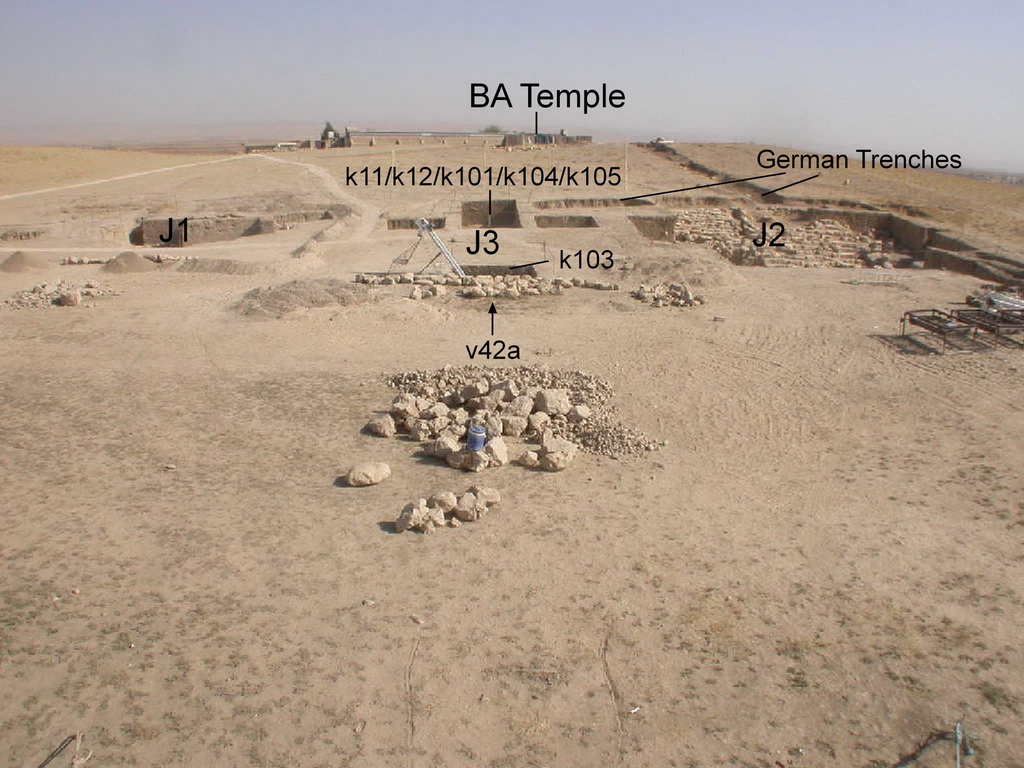Back to top: Volumetry: Loci
Introduction
A total of 28 loci were planned (25 excavated) over three seasons (2005, 2006, and 2010)
Eleven were regular 5m x 5m squares (k1, k2, k11, k12, k13, k21, k22, k23, k31, k32, and k103. Of the regular squares, three were first excavated in a previous season by unit J2 (k11, k21, and k31). Four were partial squares excavated to clear sightlines to the revetment wall and aprons (k90, k91, k92, k93, and k94).
Three more loci were partially excavated as part of the German excavations in area B6. (k2, k106, and k107)
Six rectangular loci were designated for special excavation (k100, k101, k102, k104, k105, anD k110. Two loci were formed by joining reqular squares (k108 and k109).
Three more loci were planned but never excavated (k20, k24, and k25). One was measured in error (k53).
Back to top: Volumetry: Loci
MZ21(2008) loci (squares)
There were 11 regular squares laid out and excavated in J3:
k1,
k1,
k11,
k12,
k13,
k21,
k22,
k23,
k31,
k32,
k103,
>

|
Back to top: Volumetry: Loci
Special loci: k90, k91, k92, k93, and k94.
| Loci k90, k91, k92, k93, and k94 are of irregular shape and were excavated to improve sightlines from a new viewing platform to the south. Excavation stopped when the revetment wall and apron could be clearly seen from the platform. |

|
Back to top: Volumetry: Loci
Special locus: k110.
|
Special locus k110 was opened in the latter part of a study season M23(2010-U) to identify the source of a large quantity of Late Chalcolithic sherds found in the vicinity of the Early Dynastic glacis (f50 and f109). The rectangular locus was in the far northeast corner of locus k13. Excavation started with the removal of the glacis, which formed an seal over lower (earlier) features. |

|
|
Seven loci assigned to unit J3 had previously been partially excavated in previous years by other entities. Loci k1, k11, k21, k90, and k106 had been partially excavated by unit J2. Loci k2, k107, had been partially excavated by a German team excavating area B6. |

|
|
Loci k100, k101, k102, and k104 were small, special purpose retangular excavations made to either establish a typological sequence or, in the case of k105, to intercept the back face of the f11, the EDIII revetment wall |

|
| These loci were formed by combining and extending loci that were previously excavated. The purpose was to follow and group important features that extended beyond the boundaries of subordinate loci. Locus k108 was formed to follow the mid Mittani wahal glacis f123/f152 by combining parts of k22 and k23. Locus k109 was formed to follow the late Mittani mud glacis f241 by combining and extending loci k32 and k32. |

|
Back to top: Volumetry: Loci